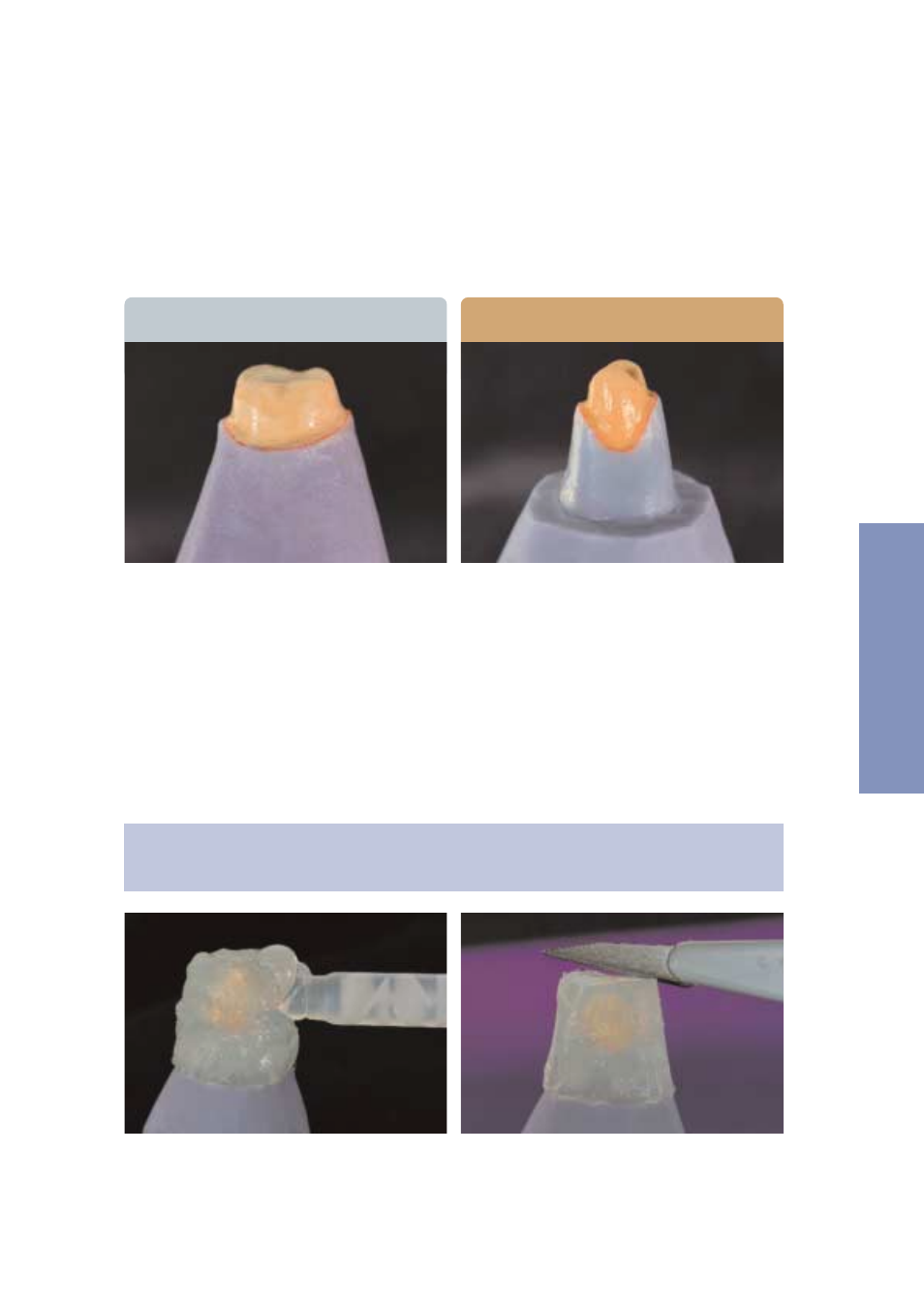Fabricating the silicone matrix – Ivoclar Vivadent Vectris User Manual
Page 31

31
Fabricating the silicone matrix
Silicone matrix made of laboratory silicone (Sil-Tech)
Remove the individual dies from the model. Carefully cover the die with laboratory silicone and adapt the material
exactly to the preparation margin. Prepare a shoulder approx. 1 cm down from the preparation margin to facilitate the
repositioning of the Transil matrix.
Tip:
Smooth out the exterior surface with a Vectris foil while the material is still soft. Mark the laboratory silicone and Transil
with a waterproof pen to obtain an exact repositioning of the matrices.
SINGLE
CROWNS
Fit the laboratory silicone to the die in a conical shape.
Fit the laboratory silicone to the die in a conical shape and prepare a shoulder approx. 1 cm
down from the preparation margin.
Version A
Flat occlusal preparation
Version B
Deep occlusal preparation
Silicone matrix made of Transil
If a deep occlusal preparation (Version B) is present, prepare a second matrix using Transil (transparent silicone). Separate
the laboratory silicone with a thin coat of Vaseline to prevent the two silicone materials from sticking to each other. Insert
the Transil cartridge into the dispenser, mount a new mixing tip and apply Transil to the die in a single step. Transil should
be applied in a layer thickness of approx. 3 to 6 mm to obtain sufficient stability. The setting reaction may be accelerated
by using a hot air dryer. After the material has set, smooth out the exterior surface to enhance the passage of light.
Subsequently, remove the Transil matrix from the die.
Apply a thin coat of Vaseline to the laboratory silicone and then apply Transil.
Smooth out the exterior surface of the Transil matrix with a scalpel.
